Mountains, borders, desert, beaches
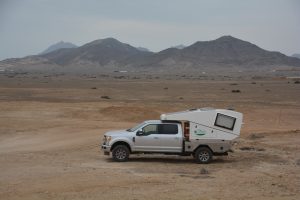
Northern Peru was all about the desert but after months of mountains, jungle and green stuff this was a welcome change
Ecuador had shown itself as a fascinating and easy place to visit based on our first ten days in the country. We had enjoyed the wide four lane divided highways of the north after the horror roads of Colombia, the traditional markets of Otavalu, the novelty of crossing the equator by road and then the magnificence of the Galapagos Islands. But now we were heading south again, heading towards Peru, and we expected a fairly cruisy run to get there. And as frequently happens, we were wrong.
It took us two long driving days to get to the Peruvian border but we enjoyed every moment. The roads immediately south of Quito were like those to the north – beautiful wide divided highways with light traffic. But after a couple of hours mountains jumped out in front of us, the road dropped down to two lanes and started its slow winding path up and over another range of the Andes.
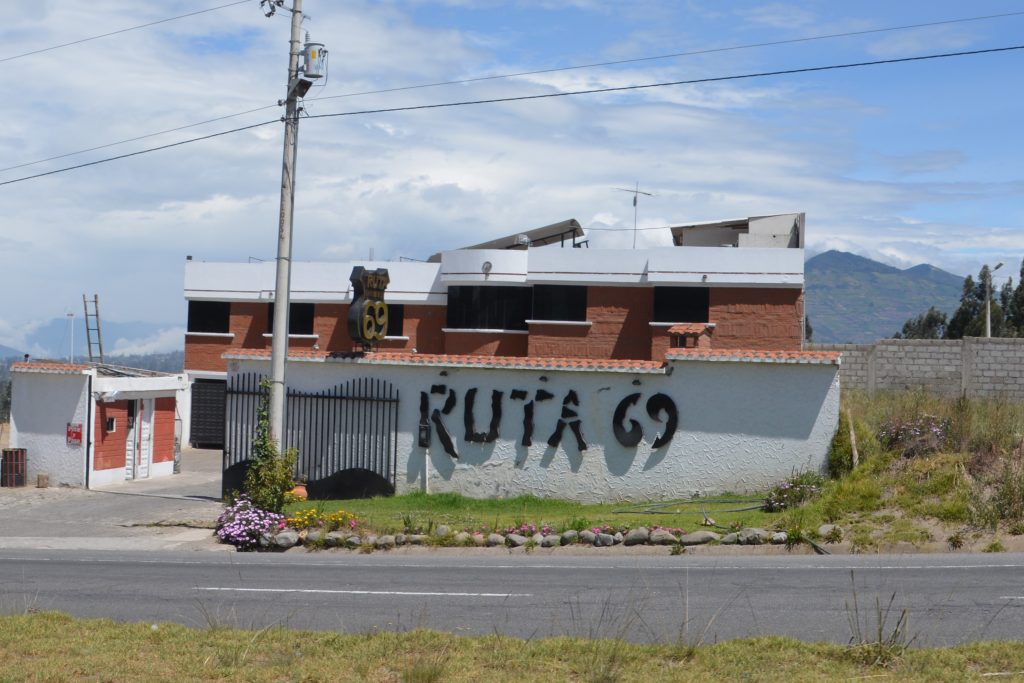
The love motels have been a feature throughout Central and South America. They provide a place for lovers to unite behind high walls and closed doors.
The drive had it all – scenic views of the patchwork fields on the steep mountain slopes, racing rivers in the deep valleys, snow-capped mountains on the horizon. We reached the highest point on our trip thus far, an astonishing 3,841 metres, about 11,900 feet, which would be the top of ski resorts in Europe and America but here was nothing more than a green fertile saddle in the range with mountains towering above us.
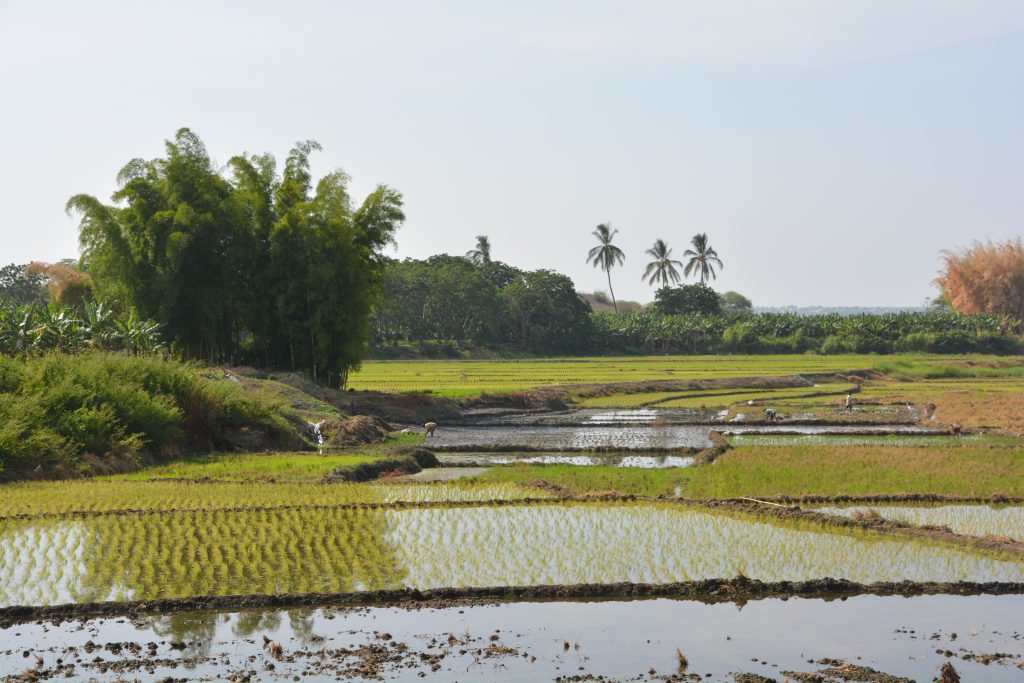
As the mountain tropics gave way to the lower fertile plains we saw large fields of bananas and rice
This was followed by a long winding descent, thick pea soup fog and rain. And all the while we passed through very modest hillside villages, people in traditional dress eeking out an existence from their crops on the steep slopes. More than once we saw the quintessential Andean scene of a woman in a colourful shawl and a fedora-type traditional hat with a baby hugging her back, swathed in a blanket tied around her neck while she toils in the field or outside her home. The whole day was National Geographic stuff. We camped the first night way back down at sea level at a Petro Ecuador station, as you do, with mist-covered mountains all around us.
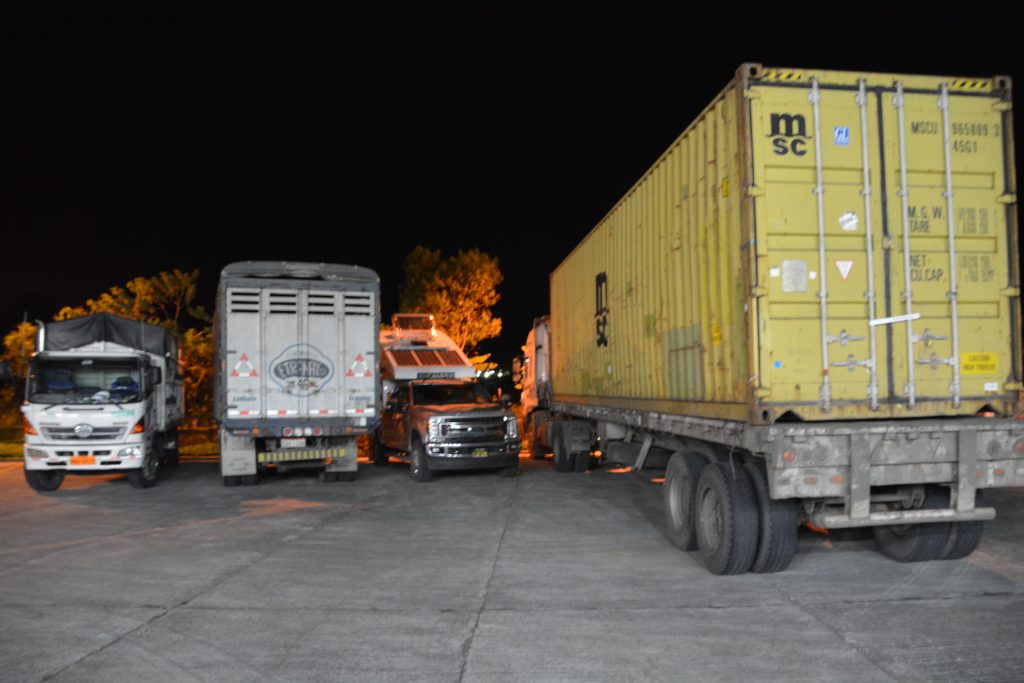
Not every campsite is an award winner – we camped at this petrol station and after dark the big trucks pulled in for the night
Ecuador has had a surprising number of military and police stops, much more than the allegedly dodgier Colombia, but nothing was worse than passing through the local town of El Triunfo. We were stopped near the edge of town by a local Transito policeman who claimed we were caught on the imaginary radar going over the speed limit and we had to pay a fine. Over a long drawn-out negotiation session that lasted 20 minutes thru Google Translate, pantomime, obvious English words (I do not speak Spanish to these guys and frequently complain that I do not understand) and threatening to call our embassy he finally let us go without paying anything.
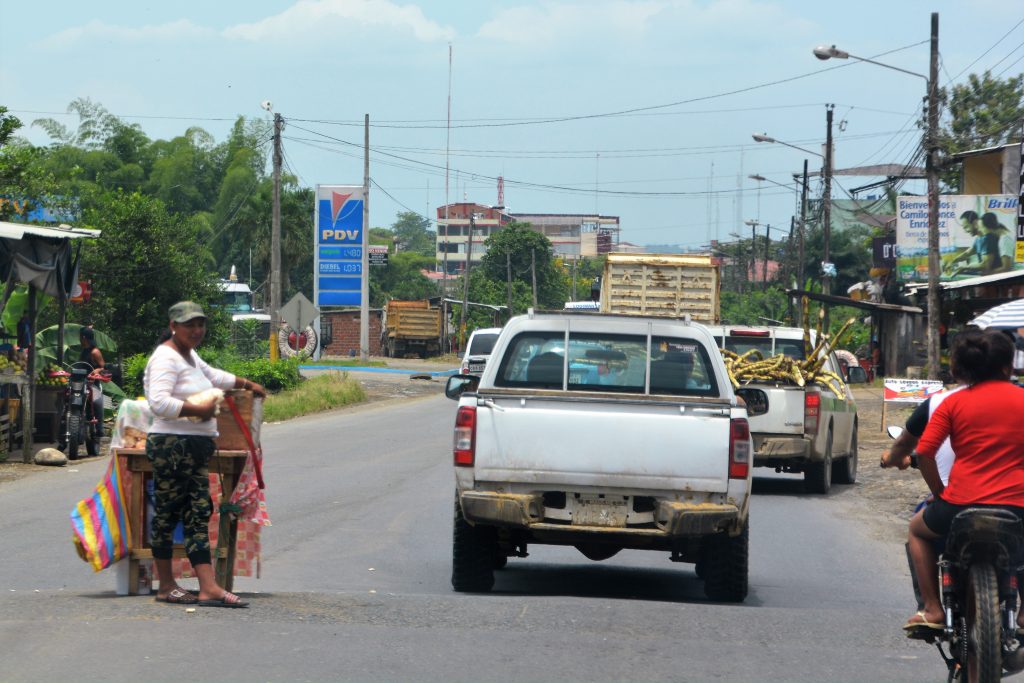
Like most countries, Ecuador has a lot of speed bumps and local entrepreneurs take advantage of the cars slowing down to set up shop in the road and sell a wide range of goods
Not ten minutes later, no kidding, an unmarked motorcycle cop pulled us over with the same spiel. Really, are all these guys just waiting for a tourista to drive through town so everyone can touch him up? This guy was more direct and said a mysterious camera had caught me speeding and the fine was US$368 but I could pay him $100 and we’d call it all square. Again, same tactic, patience, plead ignorance (of the language) and innocence (of the crime). After another 20 minutes of debating our differences he also let us go.
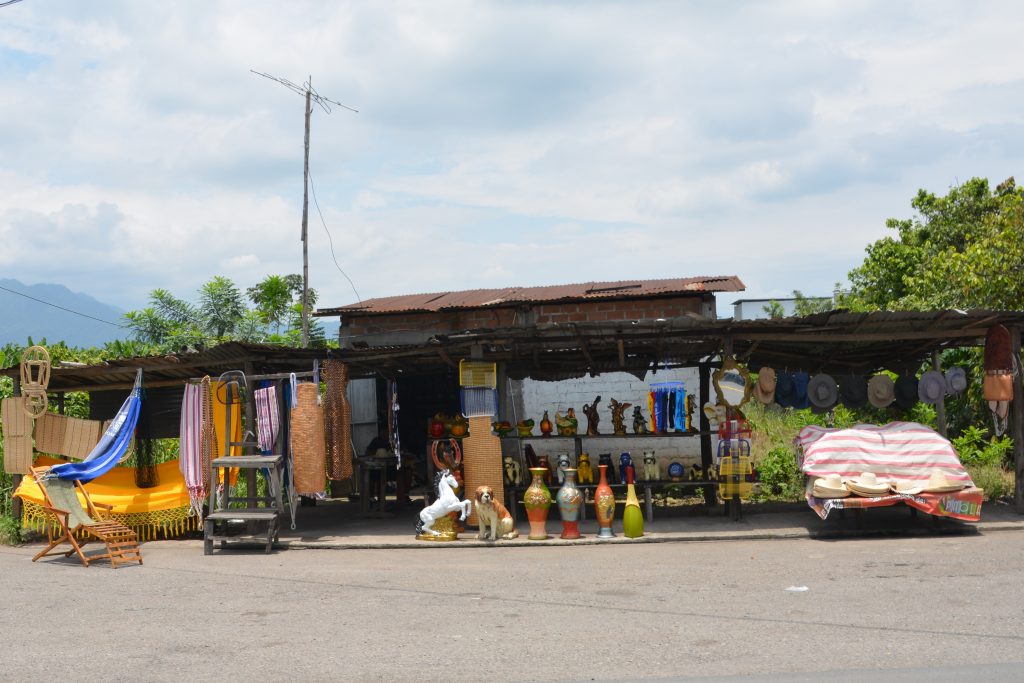
Or you can shop the more conventional way by pulling over and visiting one of the many roadside stalls
We passed through flat open plains that were coated in banana trees and rice patties, giving the place a hint of Southeast Asia, before rising up and over our last Ecuadorean mountain range. Here the staple crop was corn, lots of corn, blanketing the hillsides, high up on the slopes, even filling in the gaps of small villages. Pity the poor bloke around here who doesn’t like corn. We finally made the Ecuadorean-Peruvian border and easily passed through both sides in about 70 minutes. By that stage dusk was upon us and the friendly guys at the Peruvian Aduana (Customs) station agreed to let us camp only metres from their humble shed. The roaming pigs and goats were our only disturbance all night.
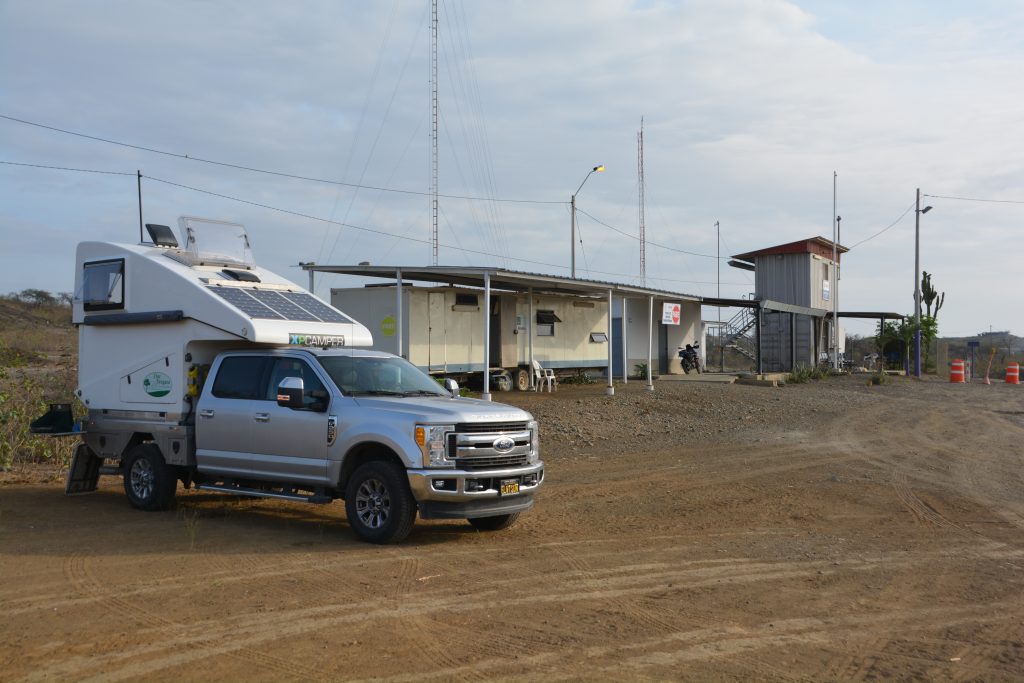
Camping with the Peruvian customs guys – they let us pull up for the night right next to their little shed
In the end we spent ten days in Ecuador and obviously the highlight was the Galapagos Islands which would enter anyone’s top ten all time travelling experiences. We also enjoyed the variety of the land, from the highest mountain passes to the low fertile plains, the cheap petrol ($1.48 per gallon!), traditional dress of the hilltribe people and the good roads. We’re okay with a few military checkpoints but our experience was that the local police in Ecuador were more corrupt than any we had seen since Mexico, which is saying something.
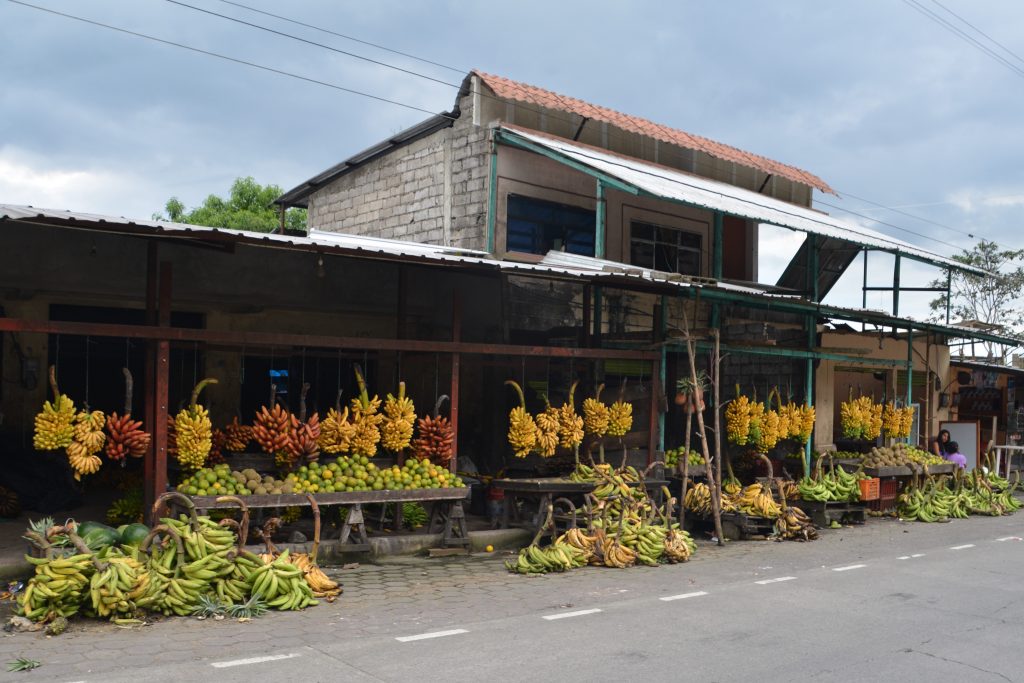
Before the low desert there is high jungle and jungle means tropical fruits and veggies – especially multi-coloured bananas

In a small town of northern Peru we saw these two people peddling live turkeys – all hung rather casually over their shoulders
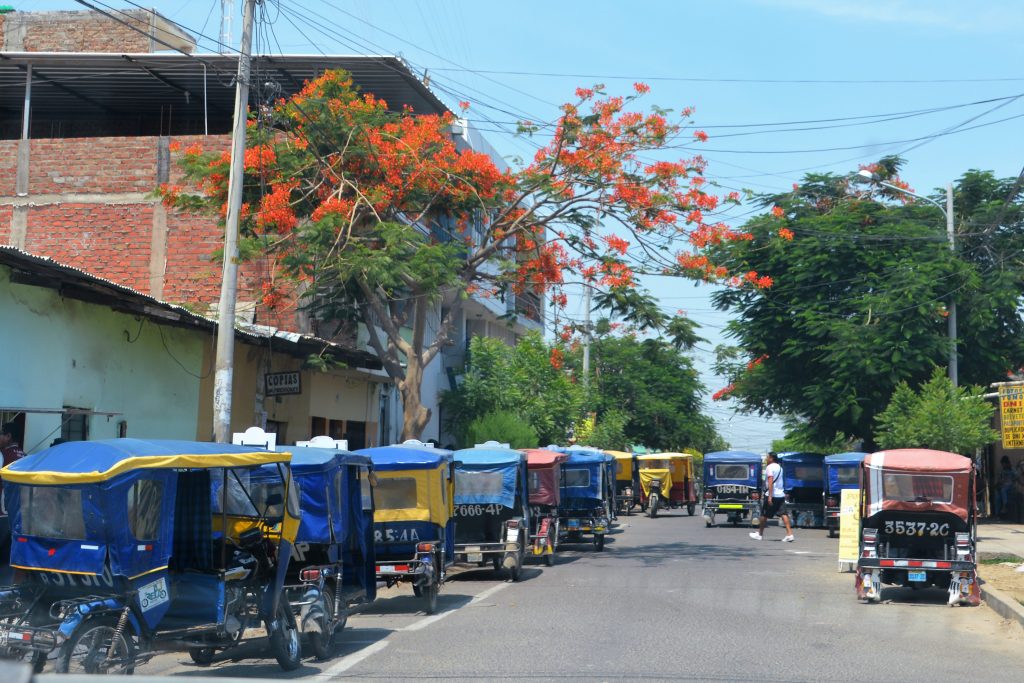
Tuk tuks, or moto taxis as they were called here, were the most common form of transport in the towns because nobody owns cars
We headed south through dry rolling hills to the regional community of Sullana for supplies and a Peruvian SIM card, then pushed on 200 kilometres across the Sechura Desert. This desert, completely unexpected, was a barren wasteland of dirt, sand, the occasional patch of scrubby growth and rock. Some people were living on its edges in the most basic homes – mud huts, crudely thatched walls and roofs, sometimes dirt floors. Sand dunes appeared regularly on both sides of the road and it sure didn’t feel like Peru.
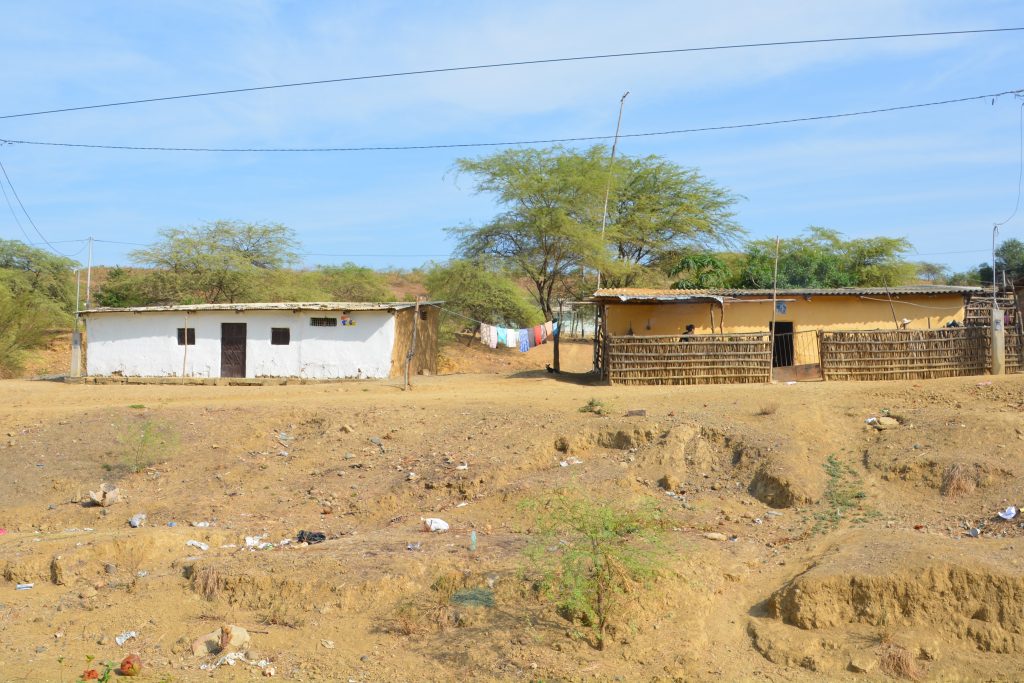
Our first impressions of northern Peru were not great – the start of a vast desert and people doing it tough
We passed through the large town of Chiclayo and headed out to the nearby beach community of Pimentel. Pimentel had been touted as one of the nicest beaches and beachside towns of Peru but we were significantly underwhelmed. Both towns were completely overtaken by piles of household rubbish, sometimes piled up two feet high on the sides of the road, scattered everywhere by dogs and wind, absolutely disgusting.
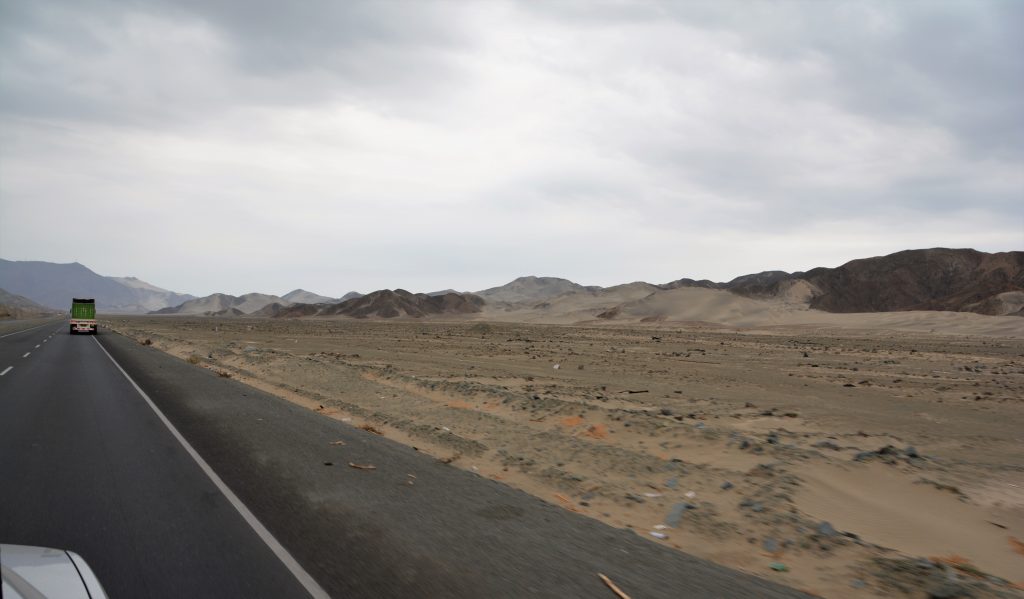
The desert scenes never ended – in fact, as we drove south the land became dryer, there were less people and more sand dunes
Pimentel looked like it had been hit by a bomb such were the dirty unpaved side streets, half-finished buildings and desolate landscape. No trees, no attempt at civic pride, hardly any paint. The beach was deep and popular with many restaurants lining the promenade and the long jetty stretching far into the ocean. Local fishermen with traditional reed boats stacked their crafts up to dry in the afternoon breeze. Despite the beach we decided this was not a place to linger.
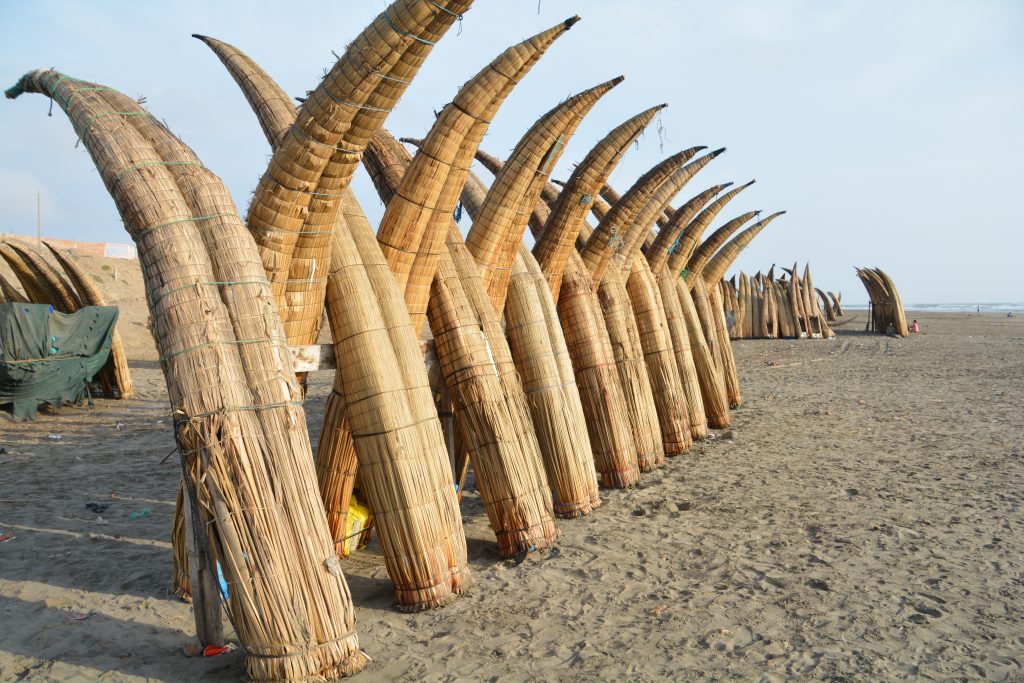
Traditional reed boats used by the locals to catch their daily supply are stacked up in the afternoon sun to dry out
We headed south again and camped behind an obscure gravel pit off the Pan-American Highway, a rare night of camping completely alone, feeling like we had the whole desert to ourselves. Very cool. We crossed more barren desert the next morning – who would have thought that Peru had massive deserts? – before visiting the Chan Chan archaeological site near the town of Trujillo.
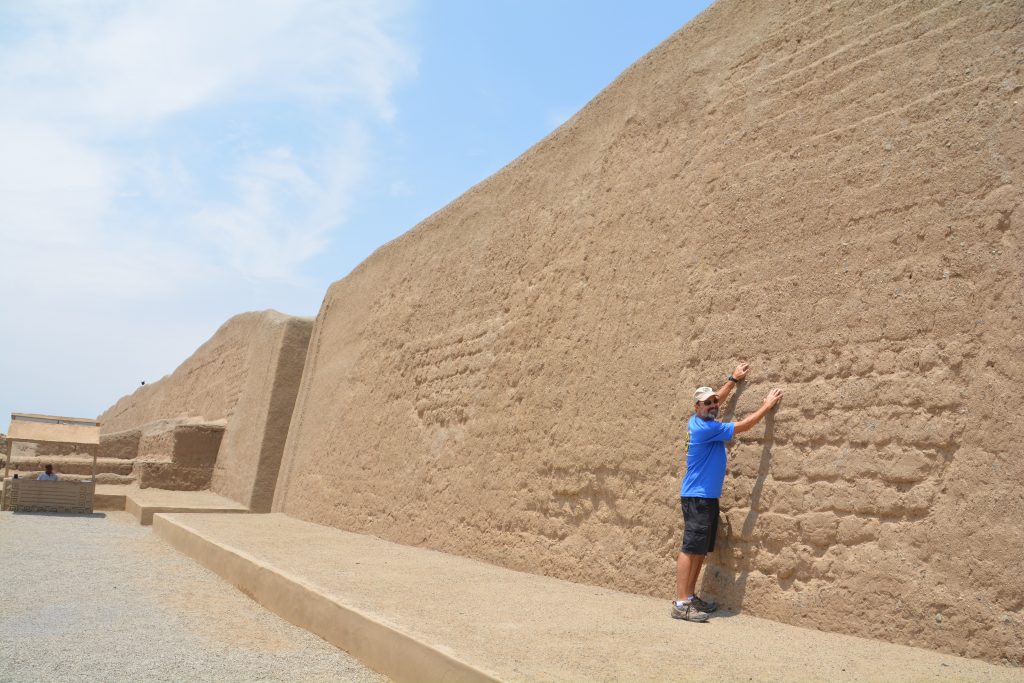
The Chan Chan archaeological site was surrounded by this high mud brick wall – the guards didn’t like me touching it!
Chan Chan is the major town of the Chimu people who lived 1500 to 700 years ago and built the largest pre-Colombian city in the Americas. At one time Chan Chan was home to over 60,000 people, an extraordinary achievement considering these people were relatively primitive, lived in a desert and built a town almost entirely of mud bricks. Visiting this site was a unique experience for us, learning about a new culture, how these people survived in such a remote place so long ago. Fascinating stuff.
But the desert just kept giving, hour after hour, harsh rocky landscape, steep barren mountains, sand dunes all around us. Occasionally we would cross a river and there would be irrigation for crops of rice and sugar cane but then the desert would take over again. We camped that night on the grounds of a hostel in the little beachside town of Tortugas with dramatic views of the little bay, water lapping up on the shore below us, all of it surrounded by dunes and mountains.
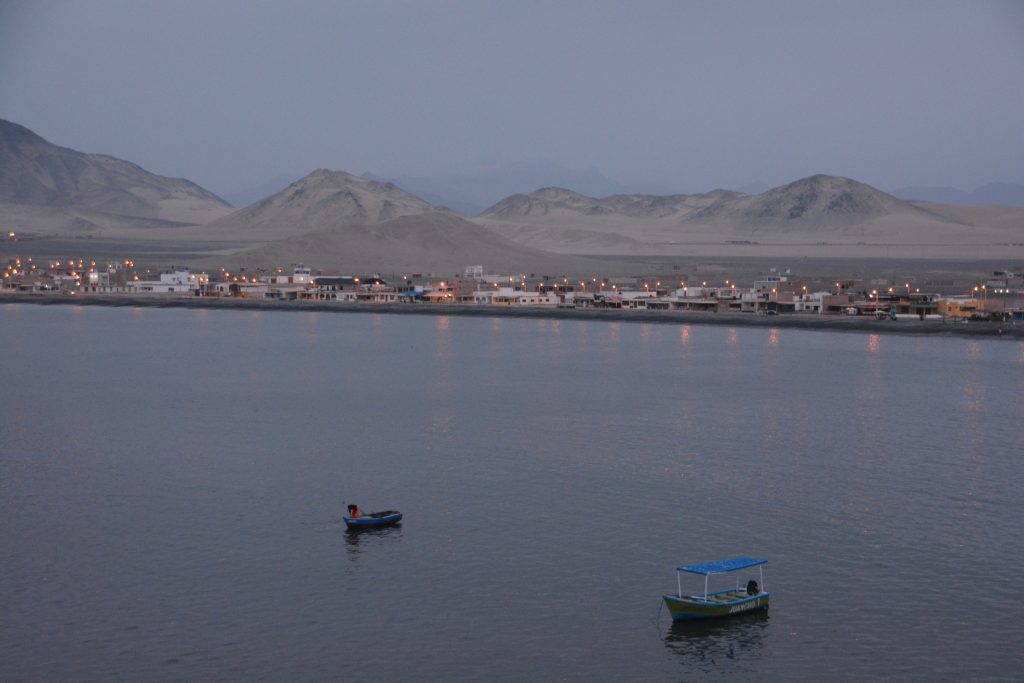
The desert fishing community nestled in on Tortuga Bay where we camped for the night in the grounds of a local hostel
As we headed into central and southern Peru we expected the desert to fall behind us and it would all be about the country’s famous mountains. We couldn’t wait!
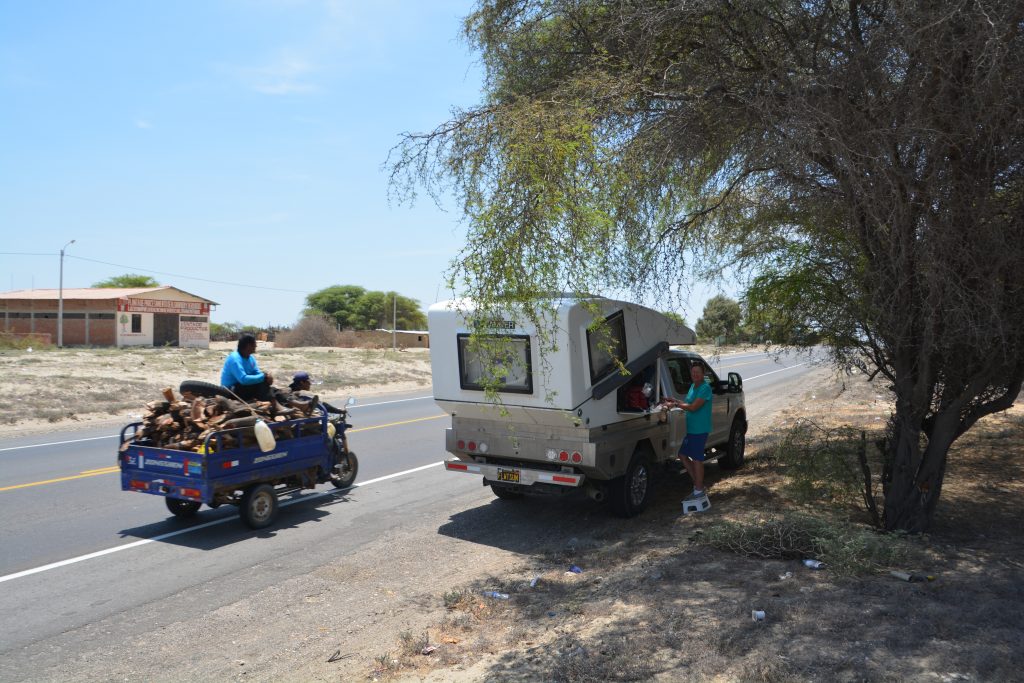
This lunch spot under the shade of a thorn tree proved disastrous as one of Tramp’s tires lost its battle with a two inch long thorn and developed a slow leak we had to get repaired
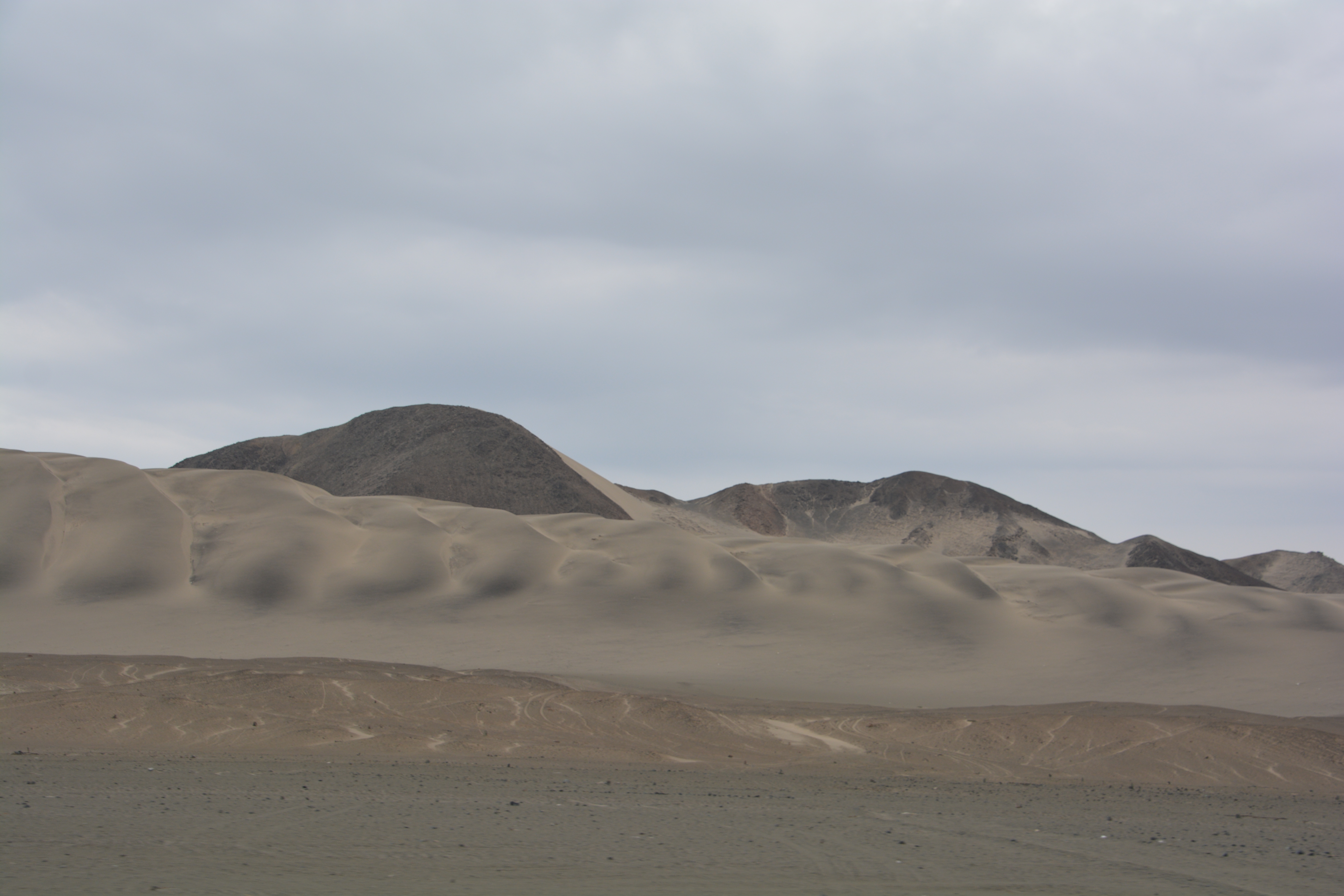









The scenery in comparison to Galapagos leaves a lot to desire, but your descriptive story and exploits still has me yearning for more.
Completely loved your visit to the islands, and it seemed the perfect way for you to discover them.
Continue to stay safe, and enjoy each day together.
Love to you both xoxoxo
Thanks Anne. We’re safe and happy – Julie says hello!